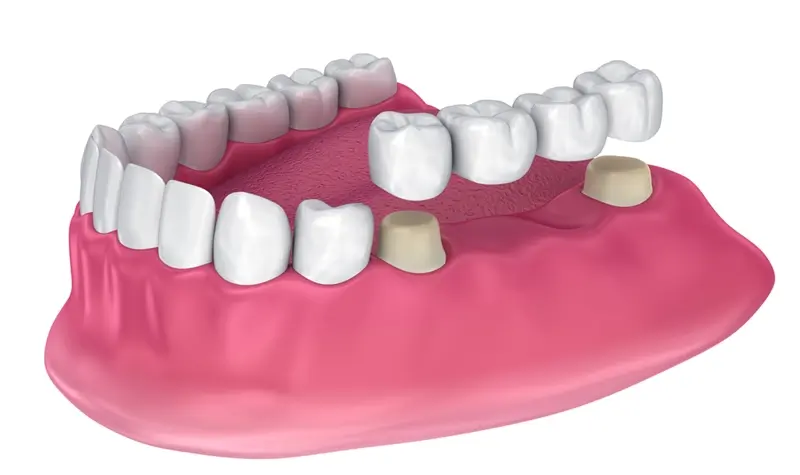One of the benefits of modern dental bridges is that they're long-lasting – surviving up to 10-15 years with proper care and maintenance. However, at some point a dental bridge may need repairing or replacing to maintain good oral hygiene. When this happens, it's commonly referred to as a dental bridge failure, which is usually down to an issue with one of the teeth either side or the cement used.
How do you know when it's time to see a professional about your dental bridge?
When a dental bridge might need to be removed
As soon as you start to experience any pain, discomfort, looseness or unusual movement, it's time to see a dentist.
As soon as you start to experience any pain, looseness or unusual movement, it's time to see a dentist in case your dental bridge needs to be removed. A loose dental bridge may cause tooth sensitivity, difficulties with bite and general discomfort.
Dental bridges usually need replacing either because of a structural problem, or where the abutment teeth need treatment or become unsuitable. The abutment teeth are those either side of the bridge, and are typically filed down to allow a dental crown to sit over the top of them, holding the structure in place.
Over time, elements of the bridge can fracture or break, meaning it has to be replaced. Abutment teeth may experience hygiene issues such as decay just like any other tooth, resulting in the need for a root canal treatment to protect them from further harm.
Repairing and replacing a permanent bridge
Where the problem is with one of the false teeth in the bridge itself, your dentist may be able to repair the coating or fracture on an individual basis to avoid having to remove it entirely. However, to treat a problem with an abutment tooth, the dentist must remove the bridge in order to properly access the tooth.
As they're generally cemented to the abutment teeth, it's usually necessary to break a dental bridge in order to remove it. There are a number of ways a dentist may opt to remove a bridge, often involving a number of tools to prise the bridge away from the abutment.
Once the issue with the natural tooth is successfully treated or it has been removed, a replacement bridge can be fitted in the same way as previously or another solution can be installed, such as dental implants.

Removing a temporary bridge
When a dental bridge is intended to be temporary, it is affixed in place with an adhesive glue and is therefore easier to remove. The type of glue used isn't strong enough to bond the bridge to the abutment teeth permanently, only to keep it stable while the permanent replacement is created. As a result, a temporary bridge is removed by the dentist as part of the treatment and is never meant to last longer than a few weeks.
Minimising the chances of problems with a dental bridge
A dental bridge needs much the same care as natural teeth. As well as regular dental checkups, patients with dental bridges must continue to brush and floss regularly. It's also recommended that fluoride toothpaste is used alongside a mouthwash. Remember, it's not just the false teeth that need looking after – good oral hygiene prevents issues with the abutment teeth too.
If you have any concerns about your dental bridge, make an appointment online or call City Dentists on 04 978 4964.
